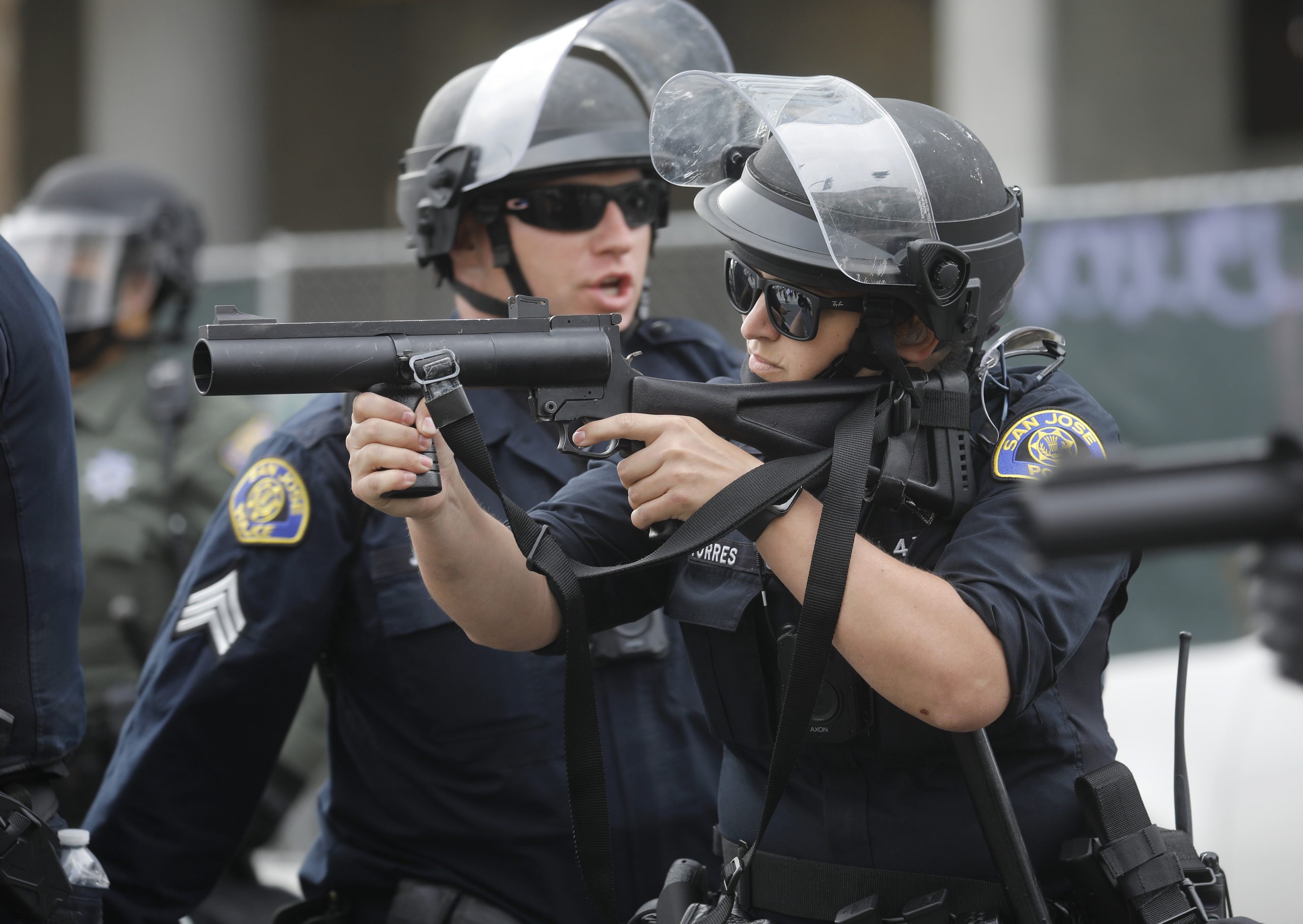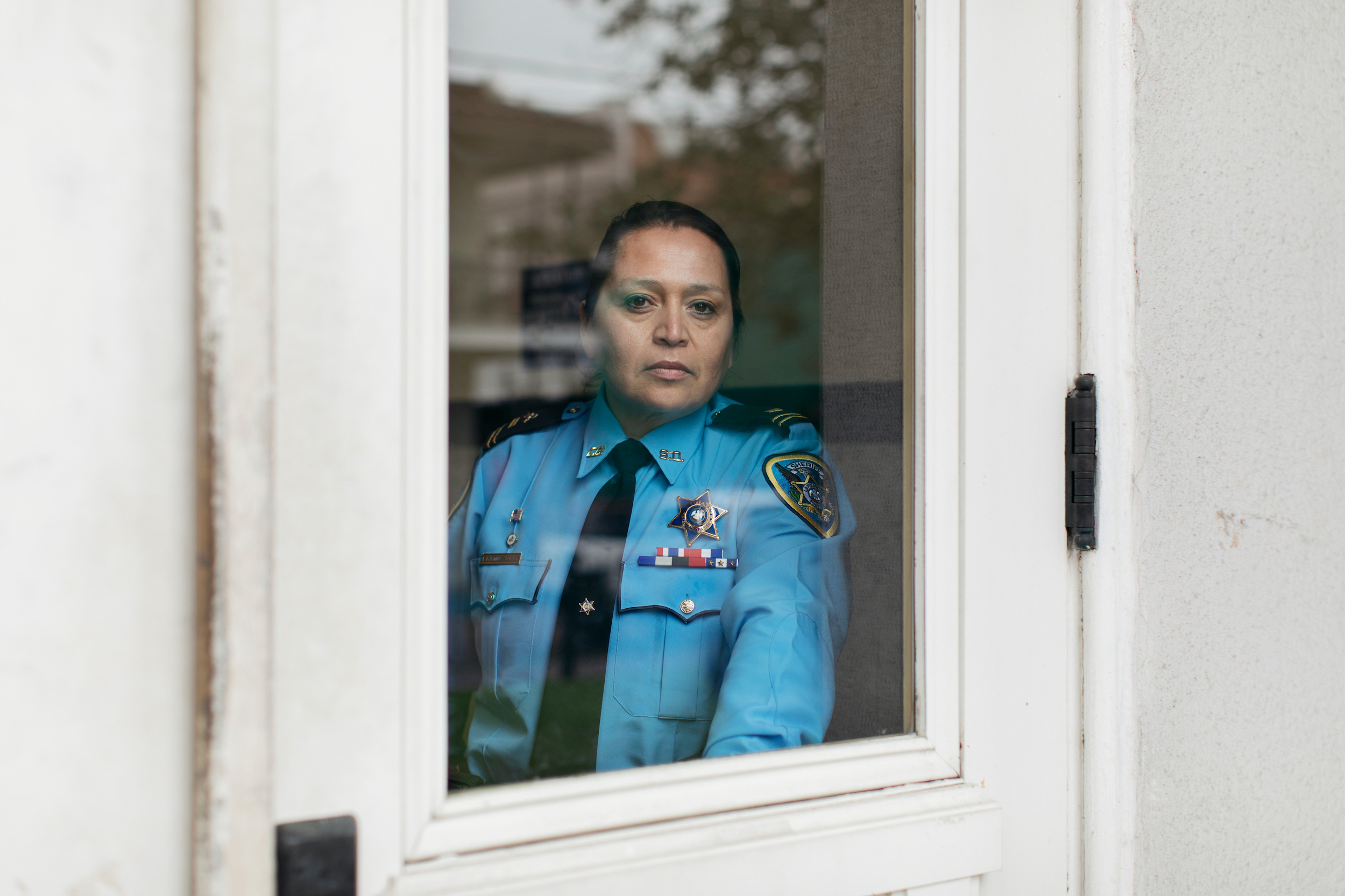Hope Martindale was peacefully protesting with a group of demonstrators on a Minneapolis thoroughfare on May 28 when police unleashed a barrage of rubber bullets. Martindale, a 25-year-old swimming instructor who’d come down from the northern suburbs to join the rally against police brutality, was shot by one of the officers.
“It felt like someone threw a brick at me,” Martindale said in a phone interview, recalling the moment when the rubber round smacked her in the shoulder. When she got home, the black and purple bruise had swelled nearly to her elbow. She was taken aback.
“The cops are supposed to protect and serve us. That’s their slogan, right? But they’re here throwing tear gas and shooting people with rubber bullets for exercising their rights,” Martindale said. “I know a lot of other protesters who have the same feelings as I do. We just don’t get it. We don’t understand why.”
Authorities have met fierce criticism over their handling of nationwide demonstrations and civil unrest touched off by the killing of George Floyd at the hands of Minneapolis Police officers. Images circulated on social media show that in cities from Los Angeles to Washington, D.C., law enforcement officers with extensive riot-control arsenals have left protesters bruised and bloodied.
Chief among the weapons police have deployed to quell demonstrations are rubber bullets, a shorthand description of projectiles designed to deliver a knock-down blow without actually penetrating a person’s body. Frequent descriptions of these rounds as “nonlethal” are misleading: Rubber bullets are infamous for inflicting serious injuries. They even cause death.
On May 31, a protesting grandmother struck with a rubber bullet between her eyes in La Mesa, California, landed in the intensive care unit. In Austin, a teenage boy has spent days being treated after a rubber bullet whacked him in the head. A freelancer photographer was permanently blinded in one eye while covering street protests in Minneapolis. The list of victims injured with rubber bullets during the last week of widespread protest goes on.
The violent crowd-control tactics have elicited widespread condemnation as a breach of international standards governing human rights and the use of force. “These are the kinds of violations that we’ve seen lately in places like Iraq and Iran,” said Brian Castner, a senior crisis advisor and weapons expert with Amnesty International who’s been monitoring the use of less-lethal arms. “Speaking personally as an American, it’s particularly distressing to see this in your own country.”
Castner said that among the most common impact munitions he’s seen are sponge rounds, a form of lightweight, high-speed projectile whose name derives from the spongy tip that sits atop its plastic base. They are fired using 40mm launchers that can also shoot bean-bag rounds and tear gas canisters, which have also featured prominently in recent clashes.
“I think what happens is that police departments are quick to use these weapons because they feel like they’re safe,” Castner said. “But they’re not safe, and officers need to practice more restraint.”
Rubber bullets launch at velocities similar to live ammunition, but their design causes a rapid slowdown during flight. Still, they can slam into targets with as much force as a baseball traveling at 90mph, and as they are less accurate than conventional rounds, rubber bullets pose enormous risks to innocent bystanders. The knock-on effects of unrest can increase the odds of death since fears of arrest or retaliation may prompt victims to delay seeking medical treatment, experts say.
“I’ve never seen a case where the use of rubber bullets de-escalated a conflict or made for a safer environment,” said Dr. Rohini Haar, a medical expert and senior advisor to the group Physicians for Human Rights who co-authored a report about less-lethal munitions in 2018. “In most cases, it actually escalates violence.”
The Minneapolis Police Department’s use-of-force policy has explicitly forbidden deploying 40mm launchers for “crowd management purposes,” advising that when the weapons are used, officers should aim for the lower extremities. Targeting the head should be avoided, the policy states, going on to note that shooting 40mm projectiles can cause “grievous” and “permanent” injuries and “possible death.”
Yet Minneapolis officers have repeatedly shot protesters in the head and other parts of the body in recent days. News reporters have also been frequent targets. In just one example, two members of a Reuters TV crew were fired upon by a Minneapolis police officer who had positioned himself on the roof of a building with what appeared to be a 40mm launcher aimed directly at the pair of journalists below. Both were hit, with one of them taking a round to the face.
In a recent statement to The Los Angeles Times, a police spokesperson appeared to downplay the risk of sponge rounds by differentiating them from standard rubber bullets. But Stephen Semler, who co-authored a report for Armament Research Services on the police use of impact munitions during the 2014 outbreak of civil unrest in Ferguson, Missouri, said the difference was at least partly semantics. “These technologies are always evolving, but the core problems aren’t resolved,” said Semler, who now runs the Security Policy Reform Institute, a think tank. “Regardless of whether you put a little sponge on top, it’s still inaccurate, and it can still cause severe damage from the sheer impact.”
This week, Los Angeles Mayor Eric Garcetti ordered police to “minimize” their use of rubber bullets against protesters, an action that came after a raft of injuries in his city.
Some human rights advocates say that less-lethal weapons can serve legitimate law enforcement purposes, like subduing suspects who pose an imminent threat of harm to another person. But firing rubber bullets at mass gatherings has been widely condemned as posing unnecessary risks. “There’s really no situation in which using rubber bullets against large crowds of unarmed civilians is warranted,” said Haar, of Physicians for Human Rights. “Rubber bullets are dangerous, indiscriminate, and potentially lethal — and that’s a bad combination.”
Haar and her colleagues have advocated strengthening international guidelines for deploying impact munitions after their research pointed to them as the cause of “significant morbidity and mortality” over the previous three decades. Her team reviewed data on 1,984 people who’d sustained injuries from rubber and plastic bullets, bean-bag rounds, and other less-lethal projectiles in the United States and abroad since 1990. Their findings, published in the journal BMJ Open, showed that the vast majority of the injuries — 71 percent— were severe, including those to nearly 300 people who were rendered blind or otherwise permanently disabled. Fifty-three of the victims died.
Human rights experts around the globe have warned about the misuse of rubber bullets for years. After the Chilean government was accused of human rights abuses in relation to its use of rubber bullets to quell demonstrations in 2019, resulting in hundreds of cases of severe eye trauma, officials suspended their use. This year, the United Nations released protocols warning the use of less-lethal weapons in general should be treated as “a measure of last resort” in dispersing assemblies, and said law enforcement officials “have a duty” to distinguish between individuals who are behaving violently and the rest of the crowd.
“Just in 2019, there were horrendous examples of the impact of these weapons, in Chile, France, Hong Kong, just to name a few places,” said Agnes Callamard, the UN special rapporteur on extrajudicial, summary, or arbitrary executions who recently condemned the actions of American police. “These techniques have actually become extremely toxic, and they are feeding a form of policing that we should denounce.”

